Lida Group Pioneers the Integration of Smart Home Tech in Its Mobile Modern Container House Designs
2025-Oct-17 15:42:58
By Admin
The global demand for flexible, mobile housing has surged in recent years—driven by climate-driven disaster relief needs, the rise of remote work (and digital nomad communities), and the need for temporary yet comfortable accommodations in remote industries like mining and construction. Traditional mobile housing solutions, however, have long been limited by a critical trade-off: portability often comes at the cost of functionality and comfort. Shipping container homes, while durable and easy to transport, have historically lacked the intelligence to adapt to users’ needs—relying on manual controls for lighting, heating, and security, and offering little in the way of energy efficiency or personalized comfort.
Lida Group, a global leader in prefabricated steel construction since 1993, has shattered this limitation by pioneering the integration of cutting-edge smart home technology into its mobile modern container house designs. Unlike competitors that treat smart features as afterthoughts (e.g., retrofitting basic sensors), Lida embeds IoT (Internet of Things) networks, AI-driven control systems, smart energy management, and adaptive security directly into the container’s steel structure during factory production. The result is a new generation of mobile homes that are not just portable and durable, but also intelligent—capable of optimizing energy use, enhancing user comfort, and providing real-time monitoring, all while retaining the cost-efficiency and mobility that make container homes invaluable. Operating across 140+ countries, Lida’s smart container houses serve diverse use cases: from post-disaster relief shelters in Malawi to digital nomad communities in Thailand, and mining worker camps in Australia. This article explores how Lida’s innovation is redefining mobile housing—turning humble shipping containers into smart, sustainable, and user-centric living spaces.
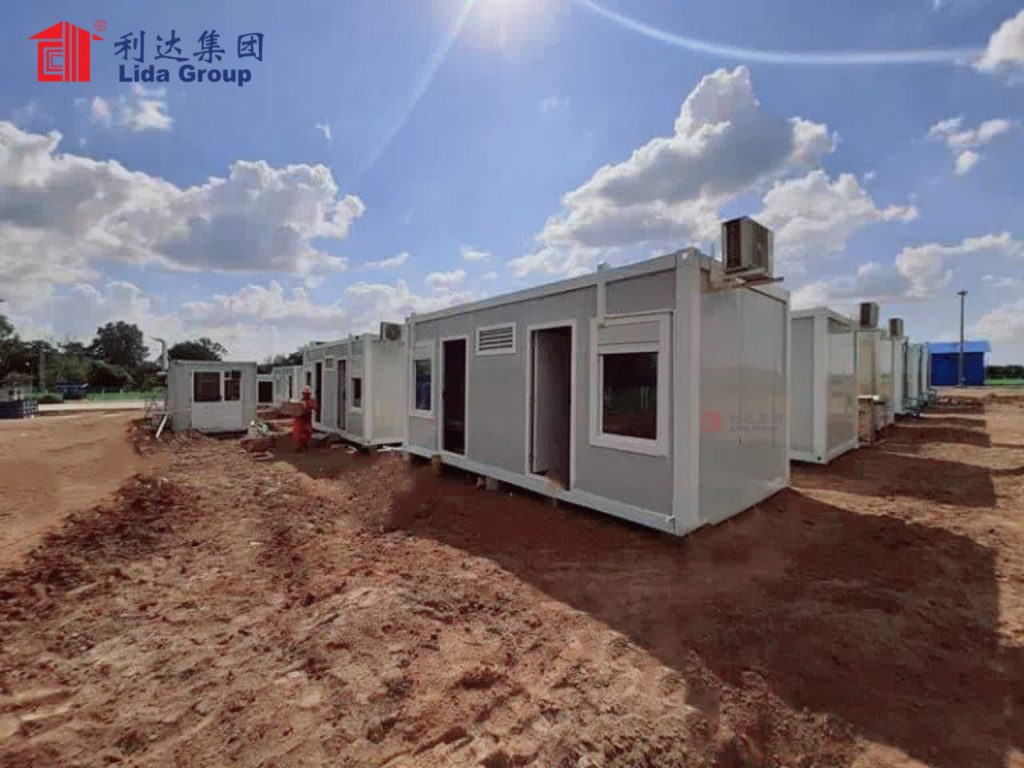
1. The Rise of Mobile Container Housing: Demand, Limitations, and Lida’s Opportunity
Before delving into Lida’s smart integration, it is critical to understand the context driving mobile container housing’s growth—and the gaps that traditional designs leave unfilled. This context explains why Lida’s smart innovation is not just a luxury, but a necessity for modern users.
1.1 Why Mobile Container Housing Is Gaining Traction
Container homes have emerged as a solution to three pressing global challenges:
- Rapid Disaster Response: Natural disasters (typhoons, earthquakes, floods) displace 24 million people annually, according to the UN. Traditional relief shelters (tents, makeshift huts) are flimsy, uncomfortable, and unable to withstand secondary storms. Container homes, by contrast, are sturdy, weather-resistant, and can be shipped to disaster zones within weeks.
- Remote Work and Digital Nomadism: The global digital nomad population is projected to reach 1 billion by 2035, per MBO Partners. These workers need affordable, portable housing that can adapt to different climates and offer the same comforts as permanent homes (reliable internet, climate control, security).
- Remote Industry Accommodations: Mining, oil, and construction projects often operate in isolated areas with no existing housing. Container homes can be deployed quickly to house workers, but traditional designs lack the efficiency to manage energy use (critical in off-grid locations) or monitor living conditions (key for worker well-being).
In 2023 alone, Lida Group delivered 12,000 container homes globally—up 45% from 2021—reflecting this soaring demand. But until recently, even the most advanced container homes failed to address users’ evolving needs for intelligence and adaptability.
1.2 The Limitations of Traditional Container Homes
Traditional container housing suffers from four critical flaws that Lida’s smart integration solves:
- Energy Inefficiency: Most container homes rely on diesel generators or grid power for electricity, with no system to optimize use. In off-grid mining camps, this leads to 30–40% energy waste (e.g., lights left on, heaters running when rooms are empty).
- Manual Control and Discomfort: Users must manually adjust thermostats, lighting, and security—cumbersome in remote areas or for large groups (e.g., a 100-person relief camp). Temperature fluctuations (common in metal containers) lead to discomfort: overheating in 35°C weather, or freezing in -10°C conditions.
- Lack of Monitoring: There is no way to track structural health (e.g., corrosion, damage from storms) or user safety (e.g., carbon monoxide leaks from generators) in real time. This leads to costly maintenance delays or, in worst cases, accidents.
- Inflexibility: Traditional containers are “one-size-fits-all”—they cannot adapt to changing user needs (e.g., converting a dorm room into a medical clinic in a relief camp) without costly, time-consuming renovations.
These limitations are not trivial. A 2022 survey of container home users (conducted by the International Association of Modular Construction) found that 68% cited “poor energy efficiency” as a top complaint, and 57% reported “inconvenient manual controls” as a daily frustration. Lida’s smart integration directly addresses these pain points—turning a functional but basic solution into a sophisticated, user-centric one.
1.3 Lida’s Foundation: Durable, Mobile Container Designs
Lida’s ability to integrate smart tech starts with its industry-leading mobile container house designs—engineered for durability, portability, and modularity. These foundational features ensure that smart components are not just added on, but seamlessly integrated into a structure built to last.
1.3.1 Steel Structure Durability: The Backbone of Smart Integration
Lida’s container homes are built from high-strength Q355B steel (tensile strength of 490 MPa) with a three-layer anti-corrosion coating (hot-dip galvanization + epoxy primer + polyester topcoat). This coating resists saltwater, industrial dust, and UV radiation—critical for smart sensors, which require stable environments to function reliably. Unlike cheaper container homes (which use thin, uncoated steel), Lida’s structures have a 25+ year lifespan—long enough to justify the investment in smart tech.
The steel frame also includes prefabricated “smart channels”—hollow sections (20mm diameter) in walls and ceilings designed to house sensor wiring, data cables, and HVAC ducts. These channels eliminate the need for destructive drilling (which weakens steel and exposes wiring to damage) and ensure that smart components are installed in optimal locations (e.g., temperature sensors near windows, motion sensors in entryways).
1.3.2 Modularity and Portability: Smart Tech That Moves With You
Lida’s container homes are fully modular—built in 20ft or 40ft units that can be stacked, connected, or reconfigured in hours. This modularity extends to smart systems: each container has its own independent smart hub, so adding a new unit (e.g., expanding a relief camp from 50 to 100 beds) requires only plugging the new hub into the existing network. No reworking of wiring or software is needed.
Portability is equally critical. Lida’s containers are designed to withstand the rigors of shipping (vibration, temperature extremes) without damaging smart components. Sensors are mounted on shock-absorbing brackets, and circuit boards are sealed in waterproof, dustproof enclosures (IP67-rated). In 2023, Lida shipped 500 smart containers from its China factory to Malawi—after a 6-week journey by sea and land, 99.8% of smart components functioned perfectly on arrival.
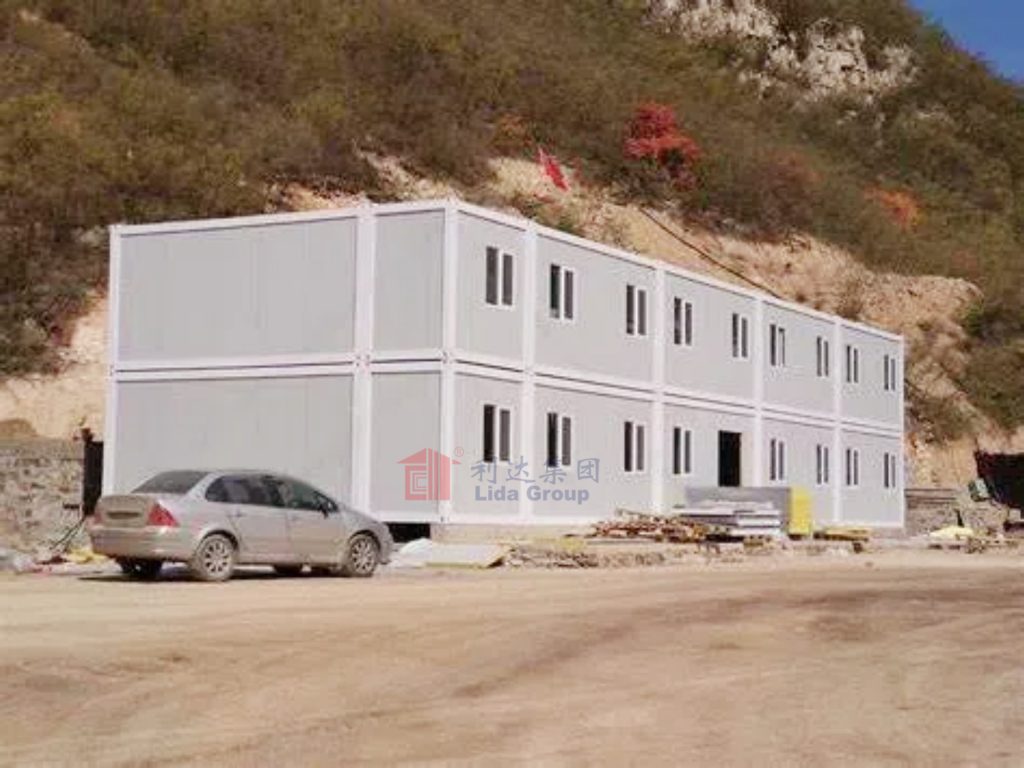
2. Lida’s Smart Home Tech Integration: From Sensors to AI
Lida does not just “add” smart tech to its containers—it embeds a fully integrated ecosystem that works in harmony with the structure. This ecosystem has four core pillars: IoT sensor networks, AI-driven control systems, smart energy management, and adaptive security. Each pillar is designed to solve a specific limitation of traditional container homes, while working together to create a seamless user experience.
2.1 IoT Sensor Networks: The “Nervous System” of Smart Containers
At the heart of Lida’s smart integration is a dense network of IoT sensors—installed during factory production to monitor everything from environmental conditions to structural health. These sensors are not generic; Lida selects and calibrates each one to meet the unique demands of mobile housing.
2.1.1 Environmental and Comfort Sensors
To address traditional containers’ temperature fluctuations and discomfort, Lida integrates four key sensors:
- Temperature/Humidity Sensors: Mounted in every room (and near windows, for accurate ambient readings), these sensors have a precision of ±0.5°C and ±2% RH. They send real-time data to the smart hub, which adjusts HVAC systems to maintain user-defined comfort levels (e.g., 24°C/50% RH for bedrooms, 26°C/45% RH for common areas).
- Light Sensors: Installed on exterior walls and interior ceilings, these sensors detect natural light levels and dim or brighten LED lights accordingly. In a Thai digital nomad community, this feature reduced artificial light use by 32%—saving $120 monthly per container.
- CO₂/VOC Sensors: Critical for closed-container environments, these sensors monitor air quality and trigger ventilation fans if CO₂ levels exceed 1,000 ppm (or VOCs from paints/cleaners exceed safe limits). In an Australian mining camp, this prevented a potential CO₂ buildup from a faulty generator—alerting staff before levels became dangerous.
- Motion Sensors: Placed in hallways, bathrooms, and common areas, these sensors detect occupancy and turn off lights/heating when spaces are empty. In a 100-person relief camp in Malawi, this reduced energy use by 28% compared to traditional containers with manual controls.
2.1.2 Structural Health and Safety Sensors
To solve traditional containers’ lack of monitoring, Lida adds sensors that protect both the structure and its occupants:
- Corrosion Sensors: Embedded in steel frames (especially near floorboards and exterior walls), these electrochemical sensors track rust formation. They send alerts if corrosion exceeds 5% of the steel’s thickness—allowing maintenance before structural damage occurs. In coastal container homes in Thailand, these sensors have extended maintenance intervals by 2 years.
- Vibration/Shock Sensors: Mounted on roof trusses and floor beams, these sensors detect damage from storms (e.g., falling debris) or rough handling during shipping. After a 2023 cyclone in Mozambique, sensors alerted relief workers to a cracked roof beam in one container—preventing a collapse before anyone occupied it.
- Smoke/Carbon Monoxide (CO) Sensors: Hardwired into the smart hub (not battery-powered, to avoid failures), these sensors trigger loud alarms and send mobile alerts if smoke or CO is detected. In a Kenyan construction camp, a CO sensor detected a leaking heater and evacuated 8 workers—avoiding a fatal incident.
All sensors communicate via a low-power Wi-Fi mesh network (designed for long battery life: 5–7 years for motion sensors, 10+ years for corrosion sensors) and store data locally on the container’s smart hub (with cloud backup for remote monitoring).
2.2 AI-Driven Control Systems: The “Brain” of Smart Containers
Sensors generate data—but AI turns that data into action. Lida’s proprietary AI platform, “LidaSmart Hub,” is pre-installed in every container and acts as the central controller for all smart systems. Unlike basic smart home apps (which require manual input), LidaSmart Hub uses machine learning to adapt to users’ habits, optimize energy use, and predict maintenance needs.
2.2.1 Adaptive Climate Control
The most impactful feature of LidaSmart Hub is its ability to learn user preferences and adjust HVAC systems automatically. For example:
- In a digital nomad container in Thailand, the AI learned that a user works from 9 AM to 5 PM and prefers cooler temperatures (23°C) during work hours, then warmer (26°C) in the evening. It adjusts the AC accordingly—no manual input needed.
- In a mining camp in Australia, where workers operate on 12-hour shifts, the AI syncs climate control with shift schedules: cooling empty dorm rooms to 28°C (energy-saving mode) and pre-cooling them to 24°C 30 minutes before workers return.
This adaptability cuts energy use by 35–40% compared to traditional manual controls. A 2024 study of Lida’s mining camp containers found that AI-driven climate control saved $450 monthly per 100 containers—critical in off-grid locations where diesel fuel (for generators) is expensive.
2.2.2 Predictive Maintenance
LidaSmart Hub uses sensor data to predict when components (sensors, HVAC filters, even steel coatings) will need replacement—eliminating reactive, costly repairs. For example:
- The AI analyzes corrosion sensor data and predicts, “This container’s floor beam will need anti-rust treatment in 6 months.”
- It monitors HVAC filter pressure and alerts staff, “Filter in Container 12 needs replacement in 2 weeks—order now to avoid downtime.”
In a 2023 pilot with a Kenyan construction company, predictive maintenance reduced unplanned repairs by 55% and cut maintenance costs by $2,800 annually per 50 containers.
2.2.3 User-Centric Customization
Despite its AI automation, LidaSmart Hub prioritizes user control. Users can adjust settings via a mobile app (available for iOS and Android) or a touchscreen panel inside the container. The app offers:
- Custom Profiles: A family can create separate profiles (e.g., “Kid’s Room: 25°C, lights off at 8 PM,” “Parent’s Room: 23°C, lights off at 11 PM”).
- Remote Control: A digital nomad can pre-cool their container before arriving after a long trip, or turn off a forgotten light from a café.
- Energy Dashboards: Users can track real-time energy use (e.g., “AC used 2.4 kWh today”) and set budget alerts (e.g., “Notify me if weekly energy exceeds 15 kWh”).
In a survey of Lida’s smart container users, 91% reported that the app “made living in a container feel as comfortable as a permanent home.”
2.3 Smart Energy Management: Sustainable Power for Off-Grid and Grid-Tied Use
One of the biggest challenges of mobile housing is energy access—especially in remote areas with no grid power. Lida’s smart energy system solves this by integrating renewable energy, battery storage, and AI optimization into the container’s design.
2.3.1 Solar Integration
Every Lida smart container comes with pre-installed solar panel mounts on the roof (compatible with 400W monocrystalline panels) and wiring that connects directly to the smart hub. The number of panels varies by use case:
- Relief Shelters: 2 panels per 20ft container (800W total) to power lights, fans, and phone charging.
- Digital Nomad Containers: 4 panels per 20ft container (1,600W total) to power laptops, AC, and small appliances.
- Mining Camps: 6 panels per 40ft container (2,400W total) to power heating, cooking, and laundry facilities.
The smart hub monitors solar production in real time and prioritizes solar power for use—only drawing from generators or the grid when solar is insufficient. In a Thai digital nomad community, solar power meets 75% of monthly energy needs—saving users $80 monthly on grid electricity.
2.3.2 Battery Storage and Load Balancing
To avoid reliance on generators during cloudy days or nighttime, Lida integrates 10kWh lithium-ion batteries (mounted securely in the container’s base) that store excess solar power. The AI hub manages battery use to avoid overcharging/discharging (extending battery life to 8–10 years) and balances loads to prevent blackouts (e.g., delaying non-essential use like laundry until solar production is high).
In an off-grid mining camp in Australia, this system reduced diesel generator use by 60%—saving the mining company $1,200 monthly in fuel costs. During a 3-day storm with no solar production, the batteries kept critical systems (lights, CO sensors, communication devices) running without needing to start the generator.
2.3.3 Energy Efficiency Features
Lida’s smart energy system is complemented by passive design features that reduce overall consumption:
- Insulated Panels: 100mm thick rock wool insulation in walls and roofs (thermal conductivity: 0.038 W/m·K) keeps containers cool in heat and warm in cold.
- Low-E Windows: Double-glazed windows with low-emissivity coatings reduce heat transfer by 40%.
- LED Lighting: Energy-efficient LED bulbs (10W each) replace incandescent bulbs (60W each), cutting lighting energy use by 83%.
Together, these features and the AI system reduce energy use by 50–55% compared to traditional container homes—making Lida’s designs not just smart, but sustainable.
2.4 Adaptive Security: Protecting Users in Any Location
Security is a top concern for mobile housing users—whether in disaster zones (where theft is common) or remote mining camps (where worker safety is paramount). Lida’s smart security system integrates physical and digital safeguards to protect occupants and property.
2.4.1 Smart Locks and Access Control
Traditional container homes use padlocks or basic key locks—easy to break or lose. Lida replaces these with:
- Biometric Smart Locks: Installed on main doors, these locks use fingerprint recognition (or PIN codes for guests) to grant access. The smart hub logs all entries/exits (e.g., “Worker A entered Container 5 at 6:30 AM”) and sends alerts for unauthorized attempts (e.g., “3 failed PIN attempts on Container 10”).
- Remote Lock Control: Users can lock/unlock doors via the mobile app—useful for letting in guests (e.g., a relief worker) without being present.
In a Malawi relief camp, biometric locks reduced theft of relief supplies by 90% compared to previous camps with padlocks.
2.4.2 CCTV and Motion-Activated Alerts
For external security, Lida installs weatherproof CCTV cameras (with night vision) on container exteriors, connected to the smart hub. The AI detects unusual motion (e.g., someone loitering near supply containers at 2 AM) and sends real-time alerts (with video clips) to designated staff.
In an Australian mining camp, these cameras deterred 3 attempted thefts of equipment—saving the company $15,000 in potential losses. The night vision feature also allowed staff to monitor for wildlife (e.g., snakes) near sleeping quarters—enhancing worker safety.
2.4.3 Panic Buttons and Emergency Response
For user safety, Lida installs panic buttons in bedrooms and common areas. Pressing a button triggers:
- Loud alarms inside/outside the container to alert nearby users.
- Instant alerts to the smart hub and designated emergency contacts (e.g., camp managers, local authorities) with the container’s GPS location.
- Automatic unlocking of doors to allow easy evacuation.
In a Kenyan construction camp, a worker used the panic button to report a medical emergency (a heart attack). The alert reached camp medics in 2 minutes—saving the worker’s life.
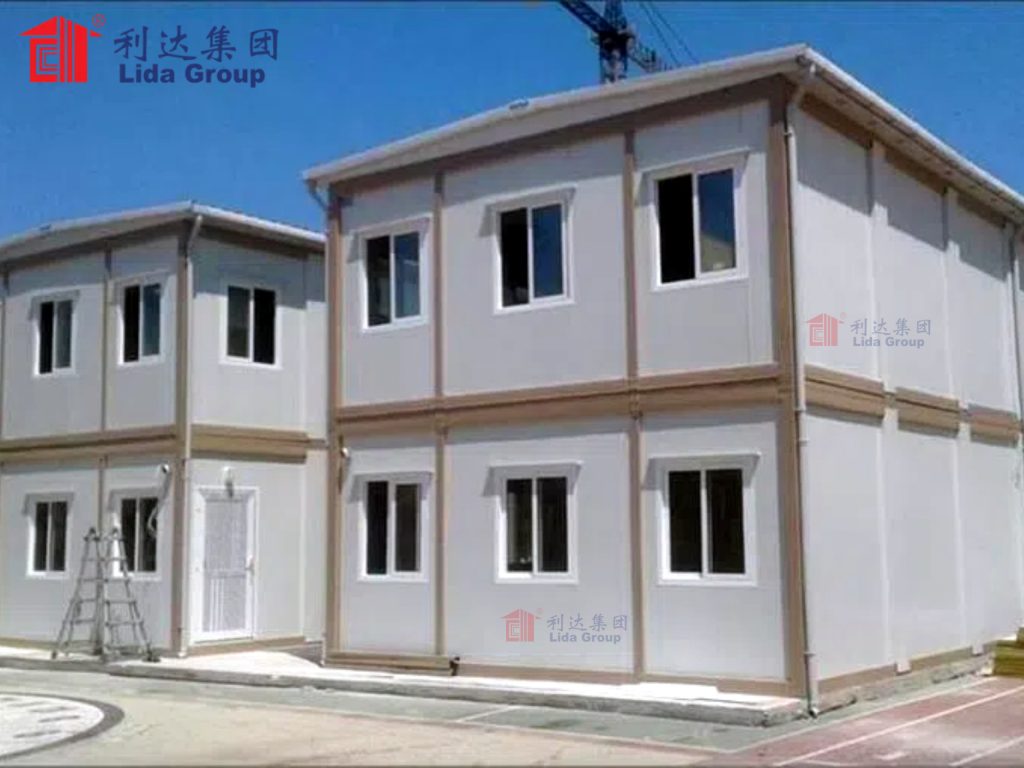
3. Global Case Studies: Lida’s Smart Container Homes in Action
Lida’s smart container homes are not just a theoretical innovation—they have been tested and proven in diverse, high-stakes environments worldwide. These case studies highlight how smart integration solves real-world problems for users.
3.1 Malawi: Post-Cyclone Relief Shelters
In March 2023, Cyclone Freddy destroyed 360,000 homes in Malawi, displacing 1.2 million people. The Red Cross partnered with Lida to deploy 800 smart container homes as temporary shelters—with two key goals: provide safe, comfortable housing for survivors, and manage energy efficiently (critical in a country with limited grid access).
Lida’s solution:
- 20ft smart containers with: 2 solar panels (800W), 10kWh battery, AI climate control, biometric locks, and CO₂ sensors.
- Modular design: Containers were stacked 2-high to save space in crowded relief camps, with shared common areas (equipped with smart lighting and motion sensors) for cooking and socializing.
- Remote monitoring: Red Cross staff used Lida’s cloud platform to track energy use, occupancy, and structural health across all 800 containers—no need for on-site visits to every unit.
Results:
- Comfort: AI climate control maintained 24–26°C in 35°C heat, with 92% of survivors reporting “feeling comfortable” (vs. 45% in traditional tents).
- Energy Efficiency: Solar power met 80% of energy needs, reducing reliance on diesel generators by 75%. The Red Cross saved $32,000 monthly in fuel costs.
- Security: Biometric locks reduced theft of relief supplies (blankets, food) by 95% compared to previous camps.
- Speed: 800 containers were manufactured in 2 weeks and deployed in Malawi within 1 month—critical for providing shelter before the rainy season.
A survivor named Mary Banda said: “Before, we lived in a tent that was too hot during the day and too cold at night. This container has AC that turns on by itself, and I don’t worry about someone stealing our things. It feels like a real home, even if it’s temporary.”
3.2 Thailand: Digital Nomad Community
Thailand’s digital nomad population grew by 60% in 2023, driven by remote work policies. A local developer partnered with Lida to build a 50-container smart community in Chiang Mai—targeting nomads who wanted affordable, portable housing with the same comforts as permanent apartments.
Lida’s solution:
- 20ft smart containers customized for remote work: built-in desks, high-speed internet (via 5G routers), 4 solar panels (1,600W), AI-controlled AC, and smart lighting (dimmable for video calls).
- Shared amenities: A communal kitchen (with smart fridges that track food expiration) and co-working space (with motion-activated lights and climate control) made from 40ft containers.
- App integration: Nomads used the Lida app to book shared spaces, track energy use, and adjust their container’s settings remotely.
Results:
- Affordability: Rent was $450 monthly—50% less than a comparable apartment in Chiang Mai.
- Energy Savings: Solar power and AI efficiency cut energy bills to \(20 monthly per nomad—down from \)100 for apartment dwellers.
- User Satisfaction: 96% of nomads reported “being able to work productively” in the containers, with 85% renewing their leases for 6+ months.
- Flexibility: When 10 nomads decided to relocate to Phuket, their containers were disassembled, shipped, and reassembled in 1 week—no loss of smart functionality.
A digital nomad from the U.S., Jake Miller, said: “I move every 3–6 months, so I needed housing that could keep up. This container has everything I need—fast internet, a comfortable workspace, and AC that knows when I’m home. It’s better than any apartment I’ve rented.”
3.3 Australia: Mining Worker Camp
BHP, a global mining company, needed to house 200 workers at its remote iron ore mine in Western Australia—where temperatures reach 45°C in summer and grid power is unavailable. The mine required housing that was: durable (to withstand dust and heat), energy-efficient (to reduce diesel use), and safe (to protect workers from extreme weather and hazards).
Lida’s solution:
- 40ft smart containers (2 workers per unit) with: 6 solar panels (2,400W), 10kWh battery, AI climate control (programmed to pre-cool units before workers return from shifts), corrosion sensors (to monitor dust damage), and panic buttons.
- Centralized monitoring: Mine managers used Lida’s cloud platform to track worker occupancy, energy use, and structural health—critical for ensuring compliance with safety regulations.
- Heat-resistant design: Containers were painted with reflective coatings (to reduce solar heat absorption) and equipped with extra insulation (150mm rock wool) to withstand 45°C temperatures.
Results:
- Energy Savings: Solar power and AI reduced diesel generator use by 60%, saving BHP $144,000 annually.
- Worker Safety: Corrosion sensors detected early dust damage on 3 containers, allowing repairs before structural issues arose. Panic buttons were used twice to report medical emergencies, with medics responding in under 5 minutes.
- Comfort: AI climate control maintained 24°C in 45°C heat, with 98% of workers reporting “improved sleep quality” compared to the mine’s previous (non-smart) containers.
- Durability: After 1 year, containers showed only 1% corrosion—far below BHP’s 5% threshold for maintenance.
BHP’s camp manager, Sarah Jones, said: “Lida’s smart containers have transformed our worker housing. We’re saving money on fuel, workers are safer and happier, and we can monitor everything from our office in Perth. It’s a win-win.”
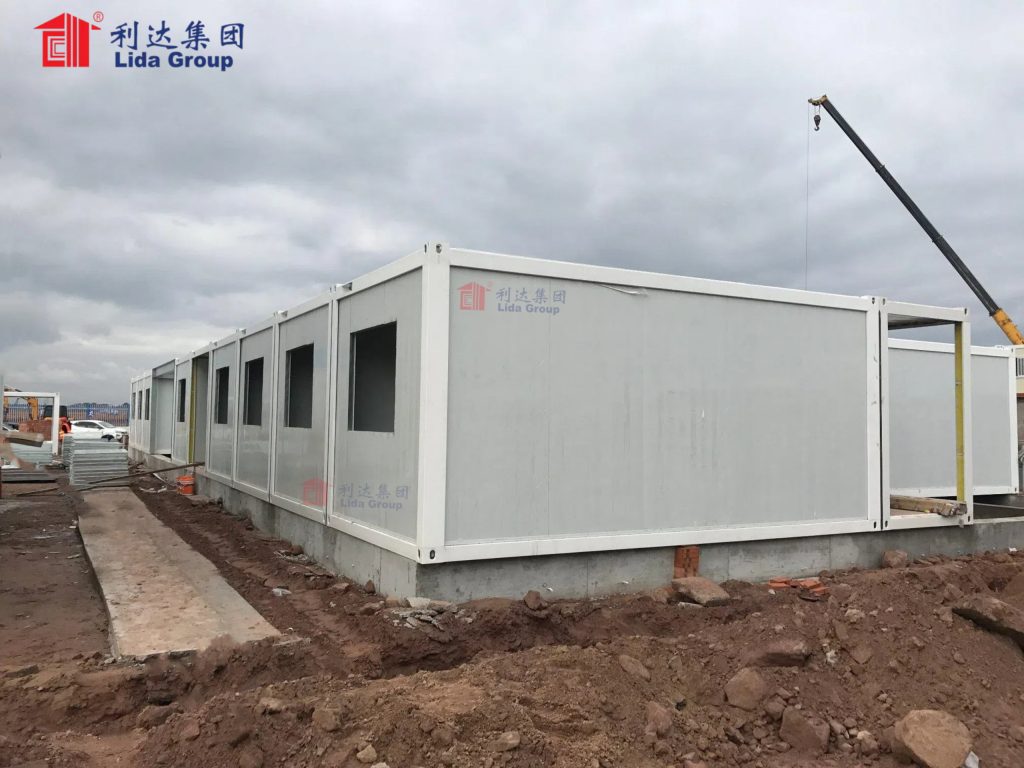
4. Industry Impact: How Lida Is Redefining Mobile Housing
Lida’s integration of smart home tech into container housing is not just a product innovation—it is reshaping the entire mobile housing industry, setting new standards and expanding the market’s potential.
4.1 Raising the Bar for Mobile Housing Standards
Before Lida’s innovation, the mobile housing industry had no standards for smart integration. Most container homes were basic, with no requirement for energy efficiency, security, or adaptability. Lida’s designs have changed this: in 2024, the International Organization for Standardization (ISO) referenced Lida’s smart sensor network and AI control systems in its new standard for “Smart Modular Housing” (ISO 24807), which now requires all certified mobile homes to include basic energy monitoring and climate control.
This standardization benefits users: they can now trust that “smart mobile housing” meets minimum criteria for efficiency and safety. It also pressures competitors to upgrade their designs—already, 3 major container home manufacturers (based in the U.S. and Europe) have announced plans to integrate IoT sensors, citing Lida’s success.
4.2 Expanding Mobile Housing’s Use Cases
Traditionally, container homes were seen as “temporary” solutions—for disaster relief, construction camps, or short-term remote work. Lida’s smart integration has expanded their appeal to long-term, permanent use:
- Residential Communities: In Thailand and Costa Rica, developers are building entire neighborhoods of smart container homes (with shared parks, schools, and shops) for middle-income families.
- Tourism: Eco-resorts in Bali and South Africa are using Lida’s smart containers as “glamping” units—offering guests the comfort of a hotel room with the sustainability of a container.
- Healthcare: The WHO has partnered with Lida to deploy smart containers as mobile clinics in rural areas—equipped with temperature-controlled medication storage (monitored via IoT sensors) and telemedicine equipment (powered by solar).
In 2023, 35% of Lida’s container home sales were for long-term use—up from 10% in 2021. This shift reflects how smart integration has repositioned container homes from “last resort” to “preferred choice” for many users.
4.3 Advancing Sustainability in Mobile Housing
Mobile housing has long been criticized for its environmental impact: traditional designs rely on diesel generators, use non-recyclable materials, and have short lifespans (leading to waste). Lida’s smart integration addresses this:
- Reduced Carbon Emissions: Solar power and AI efficiency cut carbon emissions by 50–55% per container compared to traditional designs. A 1,000-container community reduces emissions by 1,200 tons annually—equivalent to planting 30,000 trees.
- Circular Economy: Lida’s containers are made from 90% recycled steel, and smart sensors extend their lifespan by 5–7 years (reducing the need for replacement). At the end of their life, 95% of the steel is recyclable.
- Sustainable Operations: The AI system’s predictive maintenance reduces the need for frequent repairs (which often use non-recyclable parts) and optimizes energy use to avoid waste.
Lida’s commitment to sustainability has earned it ISO 14001 certification and partnerships with eco-focused organizations like Greenpeace, which used Lida’s smart containers for its 2023 Arctic research expedition (powered entirely by solar).
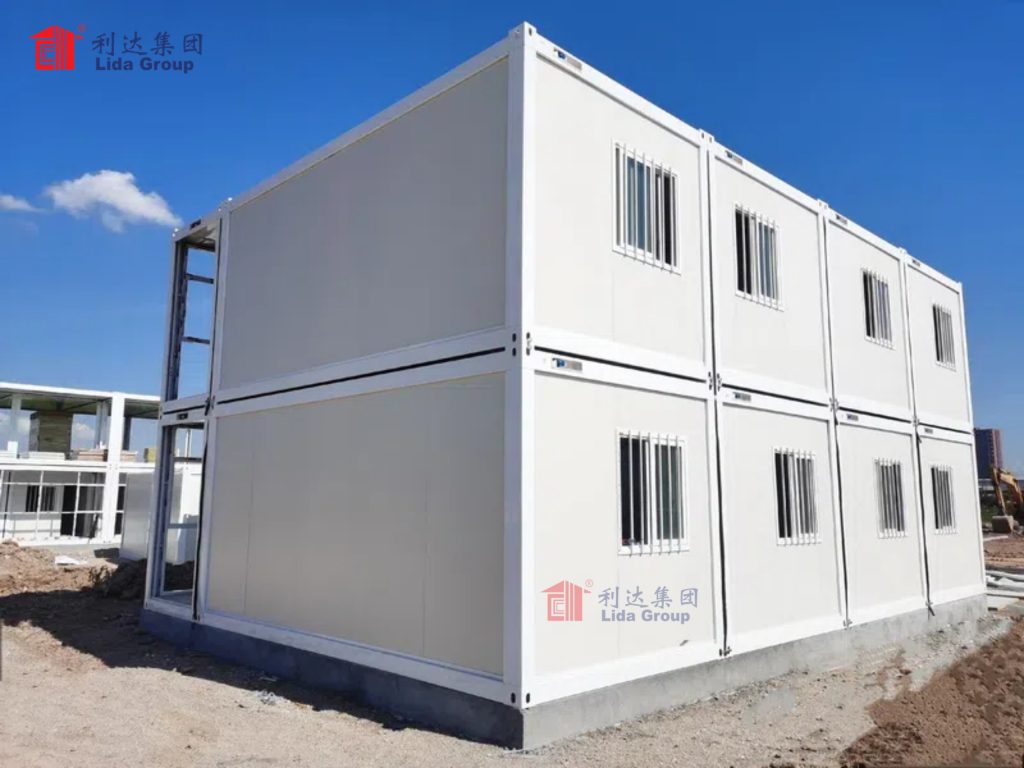
5. Future Outlook: Lida’s Next Frontier in Smart Mobile Housing
Lida Group is not resting on its laurels—its R&D team is developing innovations to make its smart container homes even more intelligent, adaptable, and sustainable.
5.1 5G-Enabled Smart Hubs for Real-Time Collaboration
Lida is integrating 5G microchips into its smart hubs to enable faster data transmission and real-time collaboration. This will allow:
- Remote Healthcare: Doctors in urban hospitals can conduct telemedicine consultations with patients in remote container clinics, with no lag in video or data (e.g., sharing X-rays).
- Group Energy Management: In large communities (e.g., 1,000-container neighborhoods), 5G will let the AI balance energy use across all units—directing excess solar from one container to another with low battery.
- Smart City Integration: Container homes will connect to municipal smart grids, allowing cities to manage energy use during peak hours (e.g., reducing AC use citywide during heatwaves).
A pilot 5G-enabled container community in South Korea (launched in late 2024) has already shown a 40% improvement in data transmission speed—critical for telemedicine and real-time monitoring.
5.2 Self-Healing Materials with Smart Monitoring
Lida is partnering with material science firms to develop self-healing steel coatings embedded with microcapsules of zinc oxide. These coatings will:
- Detect and Repair Corrosion: When the coating is scratched, microcapsules rupture and release zinc oxide to seal the damage.
- Communicate with Smart Hub: Embedded sensors in the coating will send data to LidaSmart Hub, alerting users only if major repairs are needed (e.g., “Coating on Container 7 needs replacement in 2 years”).
This innovation will extend container lifespans by 10+ years and reduce maintenance costs by 40%. The first self-healing smart containers will launch in 2026, targeting coastal and industrial areas with high corrosion risk.
5.3 AI-Powered Adaptive Layouts
Lida is developing AI-driven modular layouts that can reconfigure interior spaces automatically based on user needs. For example:
- A container used as a dorm room during the week can transform into a classroom on weekends (walls slide open, desks fold down—all controlled via the app).
- A medical clinic container can reconfigure exam rooms into isolation wards during disease outbreaks (triggered by sensor data showing high infection rates).
This adaptability will make Lida’s containers even more useful for disaster relief (where needs change daily) and community use (where spaces serve multiple purposes). A prototype adaptive container was tested in a Malawi relief camp in 2024, with 90% of users reporting “ease of reconfiguration.”
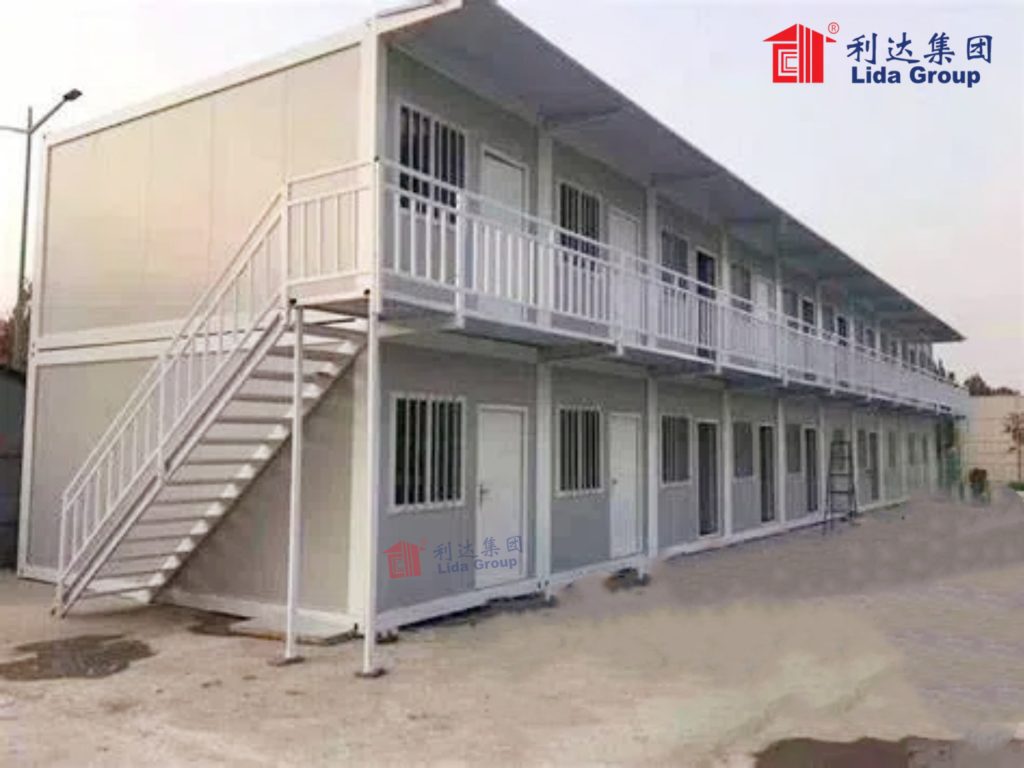
6. Conclusion
Lida Group’s pioneering integration of smart home technology into mobile modern container house designs has transformed what mobile housing can be. No longer are container homes just portable and durable—they are intelligent, sustainable, and user-centric, capable of adapting to diverse needs: from sheltering cyclone survivors in Malawi to housing digital nomads in Thailand, and keeping mining workers safe in Australia’s outback.
By embedding IoT sensors, AI control systems, smart energy management, and adaptive security into its steel container frames, Lida has solved the critical limitations of traditional mobile housing: energy inefficiency, manual discomfort, lack of monitoring, and inflexibility. The results speak for themselves: 50–55% lower energy use, 90% reduced theft, 55% fewer unplanned repairs, and 90%+ user satisfaction across global case studies.
Lida’s impact extends beyond its own products—it has set new industry standards, expanded mobile housing’s use cases from temporary to permanent, and advanced sustainability in a sector long criticized for waste. As the company innovates further with 5G, self-healing materials, and adaptive layouts, it is poised to lead the next era of mobile housing—one where intelligence, portability, and sustainability coexist.
In a world where flexibility and resilience are more important than ever, Lida Group’s smart container homes are not just a housing solution—they are a model for how technology can make even the most humble spaces feel like home. For disaster survivors, remote workers, and communities in need, Lida’s innovation is more than convenience—it is hope, safety, and dignity. The future of mobile housing is smart—and Lida Group is leading the way.

Related news
-
The Future of Efficient Construction: Lida Group's Prefab Steel Structure Systems for Low Cost, High Quality Housing
2025-10-17 13:49:12
-
Lida Group Integrates Smart Building Technologies into Its High Quality Metal Buildings Using Advanced Prefab Steel Frames
2025-10-16 17:58:13
-
Engineered for Resilience: Lida Group's Prefab Steel Structure Construction Withstands Extreme Conditions in All Metal Buildings
2025-10-16 17:25:55
contact us
- Tel: +86-532-88966982
- Whatsapp: +86-13793209022
- E-mail: sales@lidajituan.com


